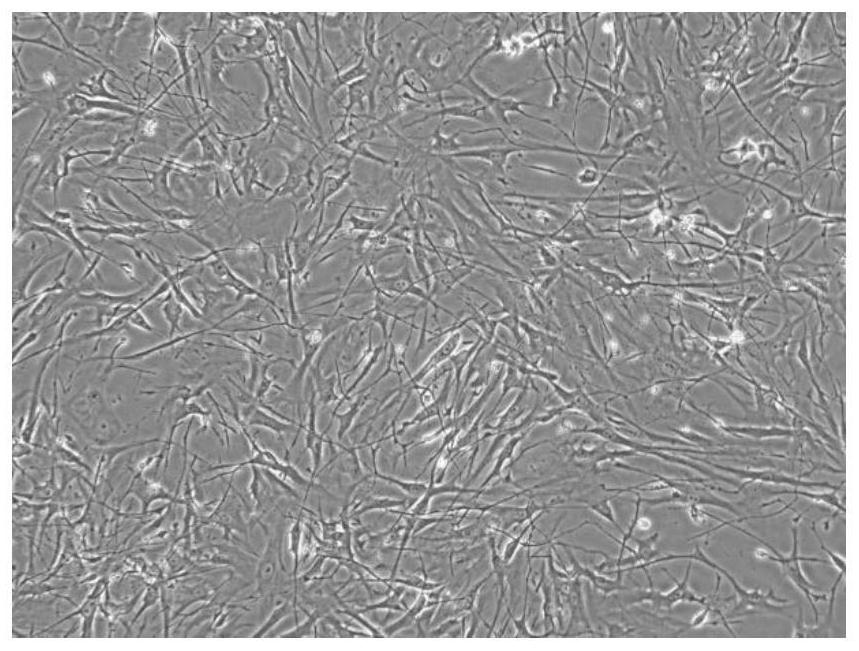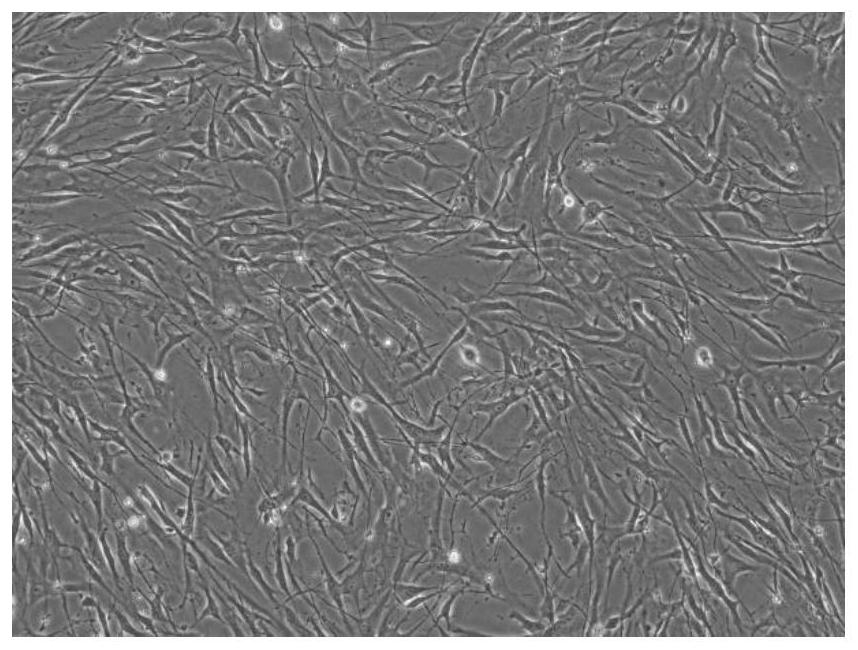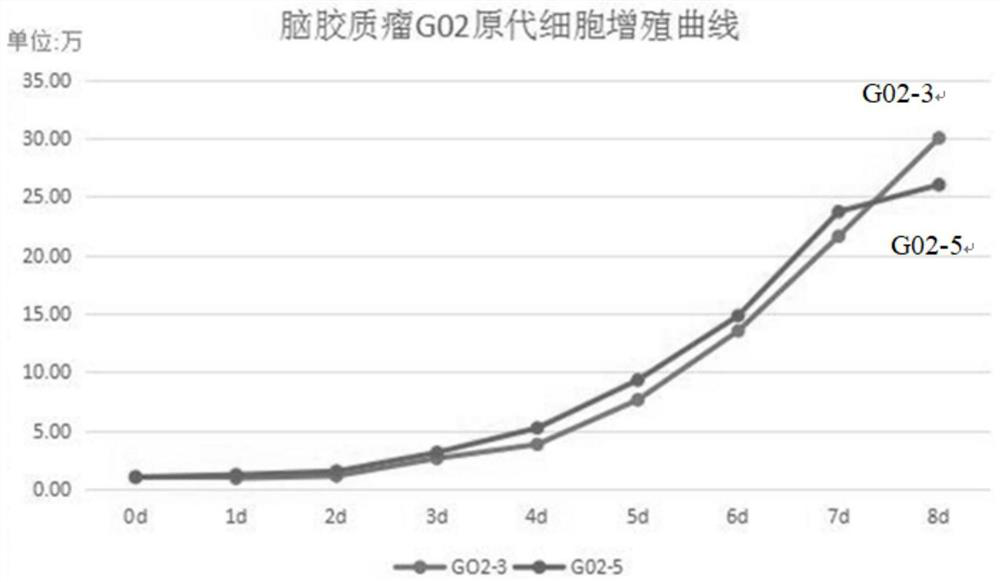Long-term cryopreservation and resuscitation method for animal tissues, clinical tissues and biopsy samples
A technology for animal tissue and biopsy samples, which is applied to the preservation of human or animal bodies, animal cells, vertebrate cells, etc., can solve problems such as inability to recover 100%, decline in the integrity of recovered cells, and inability to effectively pass on long-term passages. The effect of good vitality and subculture activity
- Summary
- Abstract
- Description
- Claims
- Application Information
AI Technical Summary
Problems solved by technology
Method used
Image
Examples
Embodiment 1
[0028] Example 1: Primary isolation culture, cryopreservation, resuscitation of human high-grade glioma primary cells, isolation culture and subculture of resuscitated primary cells
[0029] 1. Primary isolation and culture of human high-grade glioma primary cells
[0030] (1) Through the hospital ethics committee, with the consent of the patient or the patient's guardian and after signing the informed consent, fresh clinical glioma resection specimens were obtained from Wuhan Union Medical College Hospital. The specimens were WHO grade glioblastoma.
[0031] (2) Immediately put the resected specimen into pre-cooled sterile tissue preservation solution (containing 1000 U / ml penicillin, 1000 μg / ml streptomycin sulfate, 2.5 μg / ml amphotericin and 50 μg / ml gentamicin) Into the collection tube, and immediately put into a 4 ℃ sample transport box, transported to the laboratory within 4 hours for cell separation.
[0032] (3) Primary isolation culture: Obtain the tissue in a biolog...
Embodiment 2
[0047] Example 2: Primary isolation culture, cryopreservation, resuscitation of human prostate cancer adenocarcinoma primary cells, isolation culture and subculture of resuscitated primary cells
[0048] 1. Primary isolation and culture of primary human prostate cancer adenocarcinoma cells
[0049] (1) After passing the hospital ethics committee, obtaining the consent of the patient or the guardian of the patient and signing the informed consent, a fresh clinical prostate cancer resection specimen was obtained from Wuhan Tongji Hospital, which was prostate adenocarcinoma (Gleason score 4+4=8).
[0050] (2) Immediately put the resected specimen into pre-cooled sterile tissue preservation solution (containing 1000 U / ml penicillin, 1000 μg / ml streptomycin sulfate, 2.5 μg / ml amphotericin and 50 μg / ml gentamicin) Into the collection tube, and immediately put into a 4 ℃ sample transport box, transported to the laboratory within 4 hours for cell separation.
[0051] (3) Primary isol...
Embodiment 3
[0066] Example 3: Primary isolation culture, frozen preservation, recovery of dog penile carcinoma primary cells, isolation culture and subculture of recovered primary cells
[0067] 1. Primary isolation and culture of dog penile carcinoma primary cells
[0068] (1) Immediately put the resected specimen into the pre-cooled sterile tissue preservation solution (containing 1000 U / ml penicillin, 1000 μg / ml streptomycin sulfate, 2.5 μg / ml amphotericin and 50 μg / ml gentamicin) Into the collection tube, and immediately put into a 4 ℃ sample transport box, transported to the laboratory within 4 hours for cell separation.
[0069] (2) Primary isolation culture: Obtain the tissue in a biological safety cabinet, rinse it once with absolute ethanol, and rinse it twice with 1×PBS (pH 7.2-7.4), and remove blood vessels, For fat and necrotic tissue, use dissecting scissors to cut the tissue until minced; add 20ml of digestive solution containing 1×type I collagenase and 0.25% trypsin-0.2% ...
PUM
 Login to View More
Login to View More Abstract
Description
Claims
Application Information
 Login to View More
Login to View More - R&D
- Intellectual Property
- Life Sciences
- Materials
- Tech Scout
- Unparalleled Data Quality
- Higher Quality Content
- 60% Fewer Hallucinations
Browse by: Latest US Patents, China's latest patents, Technical Efficacy Thesaurus, Application Domain, Technology Topic, Popular Technical Reports.
© 2025 PatSnap. All rights reserved.Legal|Privacy policy|Modern Slavery Act Transparency Statement|Sitemap|About US| Contact US: help@patsnap.com



